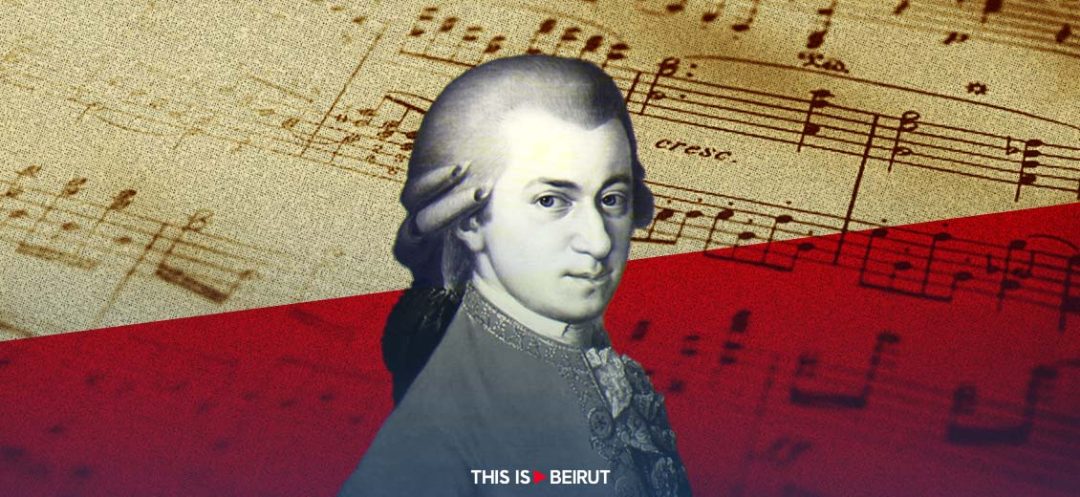Listen to the article
Mozart is undeniably a musical genius whose depth is often masked behind an appearance of lightness. French musicologist Bernard Fournier emphasizes the true greatness of the Austrian master, explores the emotional richness of his work and reveals a composer of many facets.
Wolfgang Amadeus Mozart (1756-1791), or simply Mozart: one can never say enough about him. His name remains synonymous with musical genius, a term that nowadays is often used a bit too generously (not to say that it has been devalued), thus diluting its true scope. Mozart is unquestionably, along with Johann Sebastian Bach (1685-1750) and Ludwig van Beethoven (1770-1827), one of the three major pillars of the history of Western art music. Depending on one’s sensitivity, artistic taste, vision or personal history, one may feel a stronger affinity towards one or another. Of course, there are other musicians that may be preferred by some—Frédéric Chopin (1810-1849), Richard Wagner (1813-1883), Johannes Brahms (1833-1897), Claude Debussy (1862-1918), Gustav Mahler (1860-1911) and Béla Bartók (1881-1945) to name but a few—but this boils down to a matter of taste, and taste holds no judgmental significance. As the literary theorist and art critic Gérard Genette ironically wrote, “One may prefer the song Le petit vin blanc to the Grand Fugue.” However, it would be wise not to make a silk purse out of a sow’s ear.
Unfounded Rumors
It is never superfluous to reaffirm that the Austrian master does not rest, despite unfounded rumors, in the darkness of a mass grave. The grandeur of his work fortunately remains well above these dubious sepulchral considerations. However, following the publication of the article “Mozart Was Not Buried in a Mass Grave!” by This Is Beirut on January 27, 2024, and in light of the reactions it elicited, it is imperative to avoid any misunderstanding (once again) caused by rumors that are unfounded or poorly founded, and to reiterate, word for word, the information that was exposed there, while shedding light on additional historical facts. It is now clear that the iconic scene from Miloš Forman’s 1984 film Amadeus, where Mozart’s body is thrown into a pit among other remains, stems from a serious historical misunderstanding or a romanticization that has had prejudicial consequences. This misinterpretation was notably created by historians and authors who were poorly informed and mixed all sorts of second-hand information to make a deeply erroneous description of Mozart’s burial in a mass grave.
Joseph II (1741-1790), Emperor of the Holy Roman Empire, had an aversion to all forms of ostentatious religious ceremonies and irrational superfluous customs. Moreover, for obvious hygiene reasons, he sought to reduce the decomposition time of buried bodies. Consequently, on August 23, 1784, he issued a “judicial decree concerning religious and police matters” stipulating that every deceased, whether rich or poor, should be undressed and placed in a linen bag, carefully closed and sewn. Then, the corpse should be removed from the coffin, laid in a pit, covered with soil and then promptly buried. In case multiple bodies arrive simultaneously, they could be interred in the same pit. This is the theoretical legal situation on which all the erroneous descriptions in the literature on Mozart, including that of Volkmar Braunbehrens, concerning the supposed burial of the composer in a mass grave, are based. However, Joseph II’s puritanical concept was strongly contested, especially in Vienna, where the population had not forgotten the mass graves of the plague epidemic between 1713 and 1714.
In response to protests, the emperor revoked this obligation on January 20, 1785, and everyone now had the right to be buried in a coffin with dignity. So it was for Mozart, whose coffin purchase is well documented, as noted by Michael Lorenz, an Austrian musicologist and eminent Mozart specialist. His funeral in 1791 thus strictly followed the traditions of the time. In other words, Mozart was not buried in a mass grave.
A Touch of Soul
That being said, it is high time to draw from the everlasting wellspring of Mozart’s compositions, elevating oneself above the speculations and trivial rumors surrounding his death. And who else but the seasoned musicologist, Bernard Fournier, could scrutinize, with eloquence and refinement, the aesthetic subtleties of the Austrian master’s work? According to this specialist in String Quartet and the work of the genius from Bonn, Bach, Mozart and Beethoven perfectly represent the trinity of musical genius. “What our three music ‘giants’ have in common, and what distinguishes them from other ‘greats,’ is, on one hand, what one might subjectively call ‘the soul’s extra touch’ in their music, and on the other hand, the exceptional quantity, quality and diversity of their production, the fact that they approached almost all the major genres, with works that are at the pinnacle of said genres,” explains Bernard Fournier.
The Smile Through Tears
If one considers contrapuntal complexity as the distinctive signature of J.S. Bach’s music, and melodic-harmonic depth as the very essence of Beethoven’s, it is undeniable that Mozart’s musicality also fits into an aesthetic deserving recognition and contemplation. In this regard, the French musicologist emphasizes that behind its apparent lightness, Mozart’s music can be of “immense depth,” just as deep as that of Bach or Beethoven, but deep “in a different way” that “one must know how to discover behind the mask of lightness imposed by the society of the second half of the 18th century which saw the birth of his works.” To convince oneself of Mozartian depth, Bernard Fournier recommends listening, without delay, to the String Quintet No. 4 in G minor K. 516 whose four movements take us deeper and deeper into the abyss of despair, culminating in the introduction of the finale. “This is one of the darkest and most overwhelmed pages there is, almost as breath-taking as the beklemmt (passage evoking emotional oppression, ed.) from Beethoven’s future Cavatina,” he specifies.
After this introduction, Mozart puts on his mask once again for the finale. Upon careful listening, it becomes apparent that the main theme of this Allegro is a major mode disguise of the minor mode theme from the first movement. “One then understands that Mozart’s music is the smile through tears,” Bernard Fournier subtly reveals. “In this final movement, despite the smile, one perceives the tears.” According to the octogenarian specialist, another work that directly taps into the painful depth of Mozart’s music would be the first movement of the Quartet K. 421 in D minor but also, and known to everyone, the death of Don Juan in Don Giovanni and the Requiem in D minor K. 626—“But it will be said that the tragic subject itself gives its dark color to the music. That’s why the two instrumental works cited have a more demonstrative value of the dark depth of Mozart’s music that lies in its inherent pessimism.”
Optimism and Pessimism
So, is this music which is generally light and joyful in appearance essentially deep and sad? Here is a final argument, of a structural nature, that Bernard Fournier presents to contrast Mozart the pessimist with Beethoven the optimist. “In sonata-form works, with Beethoven, the powerful developmental work that ‘kneads’ the basic material presented in the exposition deforms it, fragments it or magnifies it, in any case recomposes it, has the effect that the re-exposition is always different from the exposition,” he states. The re-exposition thus leads us into a world different from the exposition, and “the work of development bears fruit: optimism of the will.” On the other hand, he notes that with Mozart, regardless of the elaboration of the developmental work (see in particular that of the Allegro of K. 421), the re-exposition follows as if nothing had happened, the scheme of the exposition, “the work of development has changed nothing: pessimism of thought.”
At the end of this article, it is fitting to recall that Mozart has been admired by many composers of his posterity. “If his music does not attract as many composers as Bach or Beethoven, he is the supreme musician for some like Chopin or Poulenc,” Bernard Fournier attests. For others, he is part of their pantheon; this is the case for Pyotr Ilyich Tchaikovsky (1840-1893) who saw in Mozart an incarnation of divine beauty. The Russian composer even considered him a “musical Christ.”
Bibliographic References
(1) Kropatschek, Joseph. [“Handbook of All Regulations and Laws Issued Under the Rule of Emperor Joseph II for the Imperial-Royal Hereditary Lands in a Systematic Compilation”], Johann Georg Moeßle, Vienna, 1786, vol. VI, pp. 565-570.
(2) Braunbehrens, Volkmar. “Mozart in Wien 1781-1791”, Piper, Munich, 1986
(3) Kropatschek, Joseph. [“Handbook of All Regulations and Laws Issued Under the Rule of Emperor Joseph II for the Imperial-Royal Hereditary Lands in a Systematic Compilation”], Johann Georg Moeßle, Vienna, 1787, vol. VIII, p. 675f.




